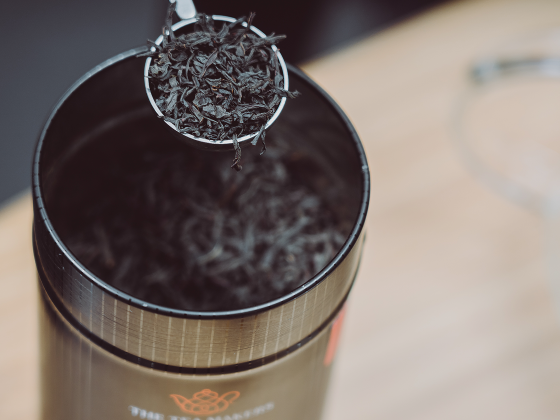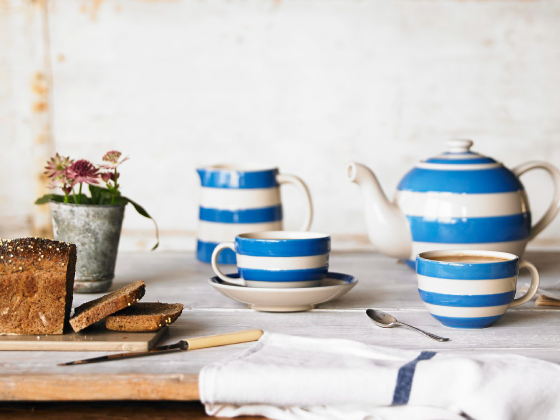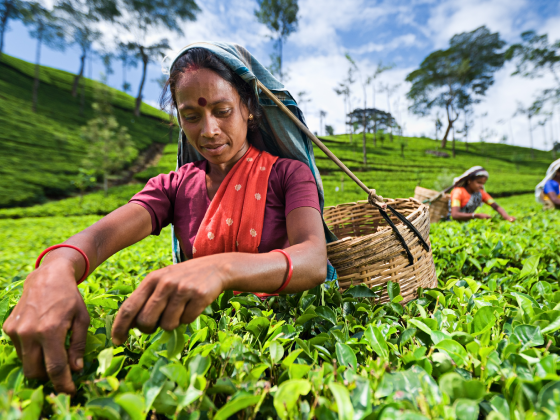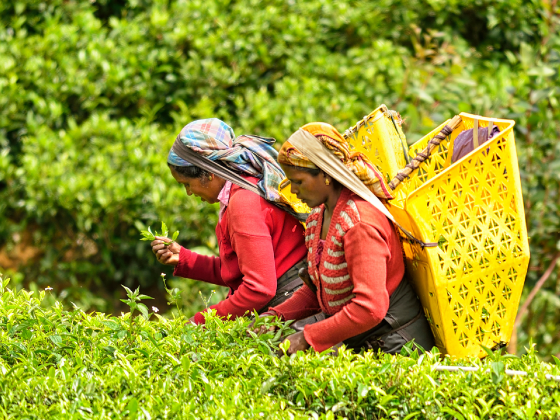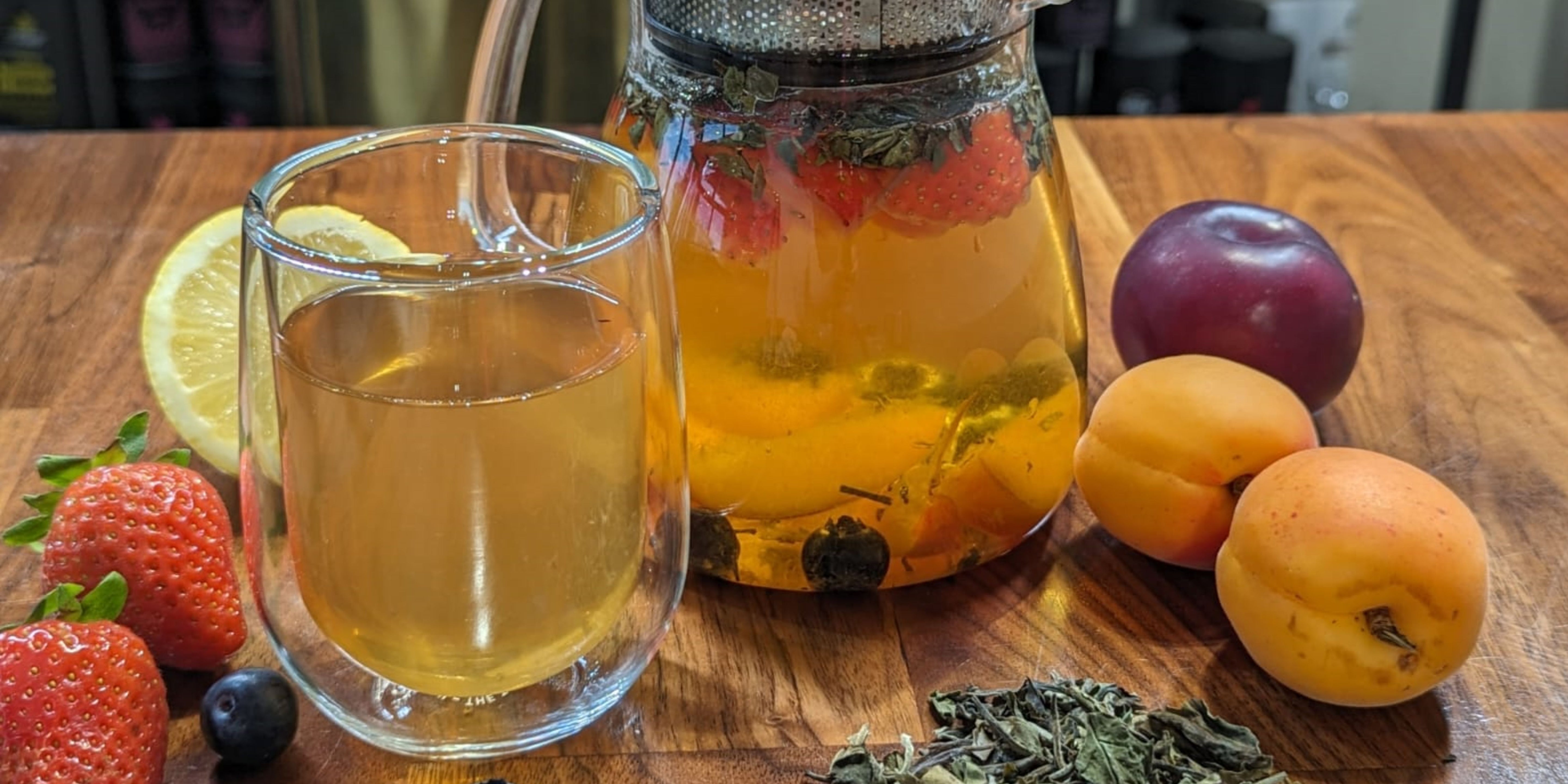What is Oolong tea?
Oolong is a semi-oxidised tea, which originated in China. The taste of the tea depends on how much it has been oxidised; lightly oxidised teas will appear and taste more like a green tea, whereas heavily oxidised teas will be more like black teas.
Oolong tea enchants with its diverse flavours, deep-rooted history, and potential health advantages, making it a tea that deserves exploration and admiration.
Origins of Oolong
Like most tea, it originated in China. The name oolong comes from the Chinese name, wūlóng, which translates as ‘dark dragon’. It likely emerged sometime between the 7th and 10th centuries in China.
Today, oolong is still predominantly grown in East Asia.
Teas have been grown on Taiwan since the 1700s. Many of the world’s best oolongs come from Taiwan, which has hugely expanded its offering and output in recent decades. Much of the tea is grown in central-Taiwan, the most mountainous region, including our Four Seasons Oolong and our Ali Shan Oolong. In China it is mainly produced in 3 main locations; the Wuyi Mountains and Anxi County, both of which are in the Fujian Province, and the Guandong Province.
What all these areas have in common is that they are mountainous, sub-tropical climates. This means that the tea has ideal temperature conditions in which to grow, experiencing hot summers and cooler winters. In mountainous regions the tea plants have lowered exposure to sunlight due to mist and fog, causing them to increase chlorophyll production and amino acids which give the tea a more refined and distinguished flavour.
What does Oolong taste like?
Typically, oolong has a smooth and balanced flavour with a mix of floral, fruity, and sometimes creamy or nutty notes. Some oolongs, particularly the heavily oxidised ones, may have a richer, roasted or caramelized taste with hints of honey, while others, such as the lighter oxidised ones, may have a green freshness and a mild creaminess.
Oolong has a mildly astringent mouthfeel and is ideal as a palette cleanser during an afternoon tea or dinner at a Chinese restaurant.
Oolong is easily the most diverse tea category, encompassing many, many different types; whether you prefer green or black tea, there is an oolong variety to suit every taste preference.

Types of Oolong tea
Four Seasons Oolong
Our Four Seasons Oolong is a wonderful introduction into the world of oolongs. It is a high mountain oolong and comes from the high peaks of central Taiwan. It is a lightly oxidised tea but enjoys complexity. The leaves are rolled up into tight pellets, which will unfurl once rehydrated. Also available in teabags!
Ali Shan
Our Ali Shan is another Taiwanese High Mountain Oolong. Grown in the Alishan area of Chiayi County in southwestern Taiwan. Similar in taste profile to a green tea, but with added layers of depth and a natural creaminess that is perfect for calming brew.
Tie Guan Yin
As an alternative to Taiwanese oolongs, our Tie Guan Yin is a Chinese icon. It is also sometimes known as Iron Goddess of Mercy. It is a smooth, refreshing oolong, green in colour with an invigorating briskness and floral notes.
Royal Blend
Our Royal Blend is truly an ode to our heritage, combining Sri Lankan Silver Tips (a type of white tea made from fresh, unopened buds) with smooth and sweet Chinese oolong, rose buds and raspberry to create a luxurious blend. This tea was created to commemorate Platinum Jubilee of Queen Elizabeth II, but this tea was so delicious it simply had to stay in our range. This tea is flavoursome, sweet and light, and is a great oolong to try for newcomers.
Oriental Beauty
Another show-stopping oolong is our Oriental Beauty. This Taiwanese oolong has a particularly intriguing secret behind its mellow, honey-like sweetness, grasshoppers!
Tiny grasshoppers and tea jassids nibble on the tea plant, triggering an early oxidation process while the leaves are still unplucked and causing the plant to release defensive chemicals, which result in a delicious natural sweetness. This process is overseen by experienced tea workers, as allowing the insects to consume too much of the leaf will cause it to become overly bitter (if there's any leaf left!)

The Difference between Oolong Tea, Black Tea, and Green Tea
Oolong Tea vs Black Tea
Both the teas are made from the same plant, Camellia sinensis, the difference is in the manufacturing process.
Oolong tea undergoes a partial oxidation process, which places it between green (non-oxidised) and black tea (fully oxidised). The leaves are withered, bruised, and then allowed to oxidise to varying degrees, typically between 10% and 80%. This process can involve multiple steps of oxidation and roasting, contributing to its complex flavour, which often features floral, fruity, or creamy notes, and can range from light and delicate to rich and robust. Some oolongs have a toasty or nutty profile due to roasting.
Black tea is fully oxidised. The leaves are withered, rolled, and then fully oxidised before being dried. This 100% oxidation gives black tea its dark colour. The process is generally more straightforward than that of oolong tea. Black tea is known for its strong, bold flavour and can have malty, sweet, or astringent notes. The flavour tends to be more straightforward and robust compared to oolong, with less complexity in the taste profile.
Oolong Tea vs Green Tea
Again, both teas are produced from the tea plant, but green tea is made from non-oxidised leaves. The leaves are quickly steamed or pan-fired after rupturing the cellular walls to prevent oxidation, preserving their green colour and fresh flavour. This process is generally simpler and faster compared to oolong tea production.
Green tea typically has a fresh, grassy, and vegetal flavour. It can also have subtle notes of sweetness or astringency, depending on the specific variety and how it is processed. The flavour is usually lighter, and more refreshing compared to oolong tea.
See our blog on the 5 Best Green Teas for Beginners to learn more about this delicious tea type.

Oolong Tea Health Benefits
Full of Antioxidants
Oolong tea is rich in natural compounds that are beneficial for health. One of the key components in oolong tea is polyphenols, a type of antioxidant. These antioxidants may help protect the body from damage caused by free radicals, which are molecules that cause inflammation and various health issues.
Brain Boosting
Like black tea and green tea, oolong is made from the Camellia Sinensis plant, and so contains caffeine, which makes it a great choice for slow mornings when you need a bit of a pick me up, but with a gentler release compared to coffee or energy drinks, so you can enjoy in the afternoon as well. Studies have also shown links between high levels of tea consumption with a lower risk of cognitive decline and lower rates of depression.
Weight Loss
Oolong may potentially boost your metabolism, helping your body to burn calories and fat at a higher rate.
While in the UK we may associate drinking tea with breakfast and biscuits, in China tea, particularly oolong, is drank throughout the day and alongside meals. Oolong is very low-calorie, and many types have a natural sweetness, making it a great substitute for sugary, high-calorie drinks and ideal for helping weight loss.
Skincare
A study examined the benefits of oolong on atopic dermatitis and found that when combined with medical treatment symptoms improved.
Oolong also contains Vitamin C, which is known for its beneficial impact on maintaining healthy skin.

Does Oolong Tea Have Caffeine?
All teas, including oolong, made from the tea plant Camellia Sinensis contain caffeine, as this is a naturally produced chemical in the plant.
The tea plant produces caffeine as a natural pesticide to protect itself against being eaten by insects- of course this is partly what makes people WANT to consume these plants.
The best thing about the caffeine in oolong tea is that it provides a gentle release of energy, without that sharp spike you experience with coffee, and it’s caffeine content is low enough that you can enjoy it the afternoon without bouncing off the walls come bedtime.
How to Brew Oolong Tea
Brewing oolong tea is straightforward and easy.
Heat water to recommend temperature on the packet (80-100C) and brew for 3-5 minutes. Strain the leaves out of the tea and enjoy!
Did you know that you can get more than one cup out of your oolong? Oolong is ideal for re-steeping and will still provide lots of flavour after being brewed twice or even three times. So don’t throw those leaves away!
We recommend drinking oolong without adding any dairy or vegan milk.

As you can see, the world of oolong is an exciting and intriguing one, and with the wide range of types, flavours and health benefits, there’s an oolong for everyone.
Take a look at our Oolong collection that we offer and enjoy this enticing brew.
Still not sure where to start? Our Oolong and Herbal Discovery Collection provides a taste of some of our favourite oolong teas, alongside some soothing caffeine-free herbal blends.
